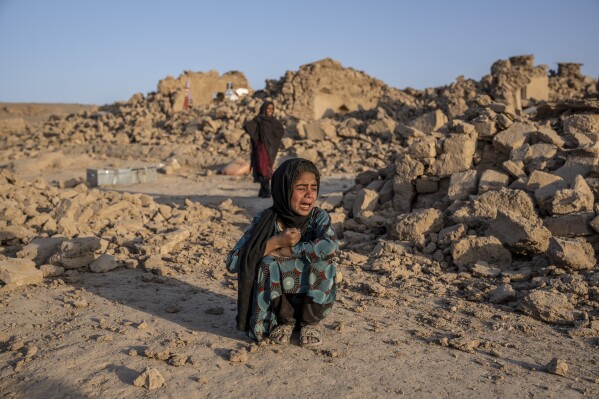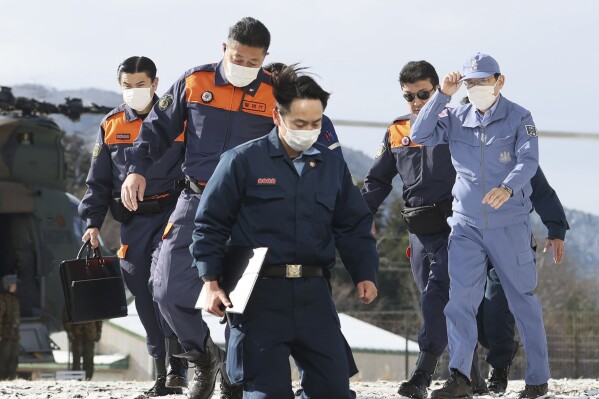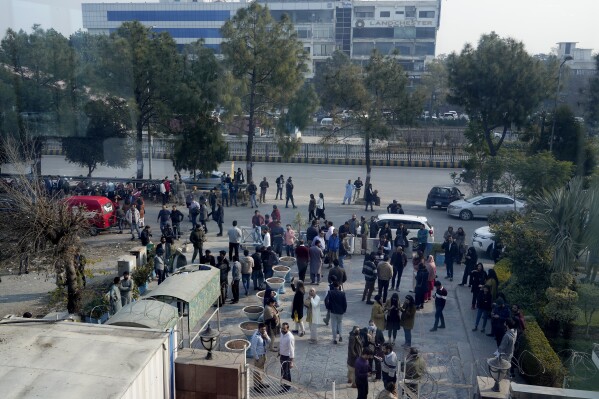Some schools reopen and garbage collection resumes in Japan’s areas hardest-hit by New Year’s quake
TOKYO (AP) — Two weeks after the deadly New Year’s Day earthquake struck Japan’s north-central region of Noto, some schools reopened and limited garbage collection resumed Monday in rare hopeful signs amid the devastation that thousands of people still face in the area.
The magnitude 7.6 earthquake on Jan. 1 killed at least 222 people and injured thousands. More than 20 are still missing.
About 20,000 people, most of whom had their homes damaged or destroyed, have been sheltering in nearly 400 school gymnasiums, community centers an other makeshift facilities, according to the central government and the Ishikawa prefecture disaster data released Monday.
Classes restarted at nearly 20 elementary, junior high and high schools Monday in some of the hardest-hit towns, including Wajima and Noto, and many students returned, but some, whose families were badly hit by the quake, were absent.



“I’m so glad to see you are back safely,” Keiko Miyashita, principal of the Kashima elementary school in the town of Wajima, on the northern coast of the Noto Peninsula, told schoolchildren.
Most of the schools in the prefecture have restarted but about 50 are indefinitely closed due to quake damage. At Ushitsu elementary school in the town of Noto, children gathered for just one hour Monday. Classes are to fully resume next week.
A part of a local train line through the town of Nanao also resumed Monday.
Garbage collectors were out for the first time since the quake in the town of Wajima, a relief for many who were increasingly worried about deteriorating sanitation.
But many residents remain without running water or electricity — more than 55,000 homes are without running water and 9,100 households have no electricity — and water pipe repairs could take months, officials said.
Prime Minister Fumio Kishida’s government has been criticized for being slow in providing relief, and though road damages and poor access to the peninsula were also blamed, some experts say officials may have underestimated the severity of the quake damage in their initial analysis.
During a visit Sunday to the region, Kishida pledged an additional 100 billion yen ($6.9 billion) for reconstruction, in addition to the 4.7 billion yen (about $32 million) in relief funds that his Cabinet had approved earlier in January.
In Wajima, 250 of about 400 students from three junior high schools used as evacuation centers for those whose homes were destroyed or damaged, are to temporarily relocate to a school in Hakusan, in southern Ishikawa, to continue classes there.
The quake inflicted much harm on local farming and fishing industries. Out of the prefecture’s 69 fishing ports, 58 were damaged while 172 fishing boats were washed away or damaged.
Emperor Naruhito, speaking at the ceremony Monday marking the 150th anniversary of the founding of the Tokyo metropolitan police, offered his first public condolences for the victims and their families.
Naruhito lauded the relief workers, including the Tokyo police, for their efforts. The emperor had earlier sent a message of sympathy to the Ishikawa governor. Monday’s appearance was his first this year since he canceled the annual Jan. 2 New Year public greeting event due to the quake.
Disclaimer: The copyright of this article belongs to the original author. Reposting this article is solely for the purpose of information dissemination and does not constitute any investment advice. If there is any infringement, please contact us immediately. We will make corrections or deletions as necessary. Thank you.
